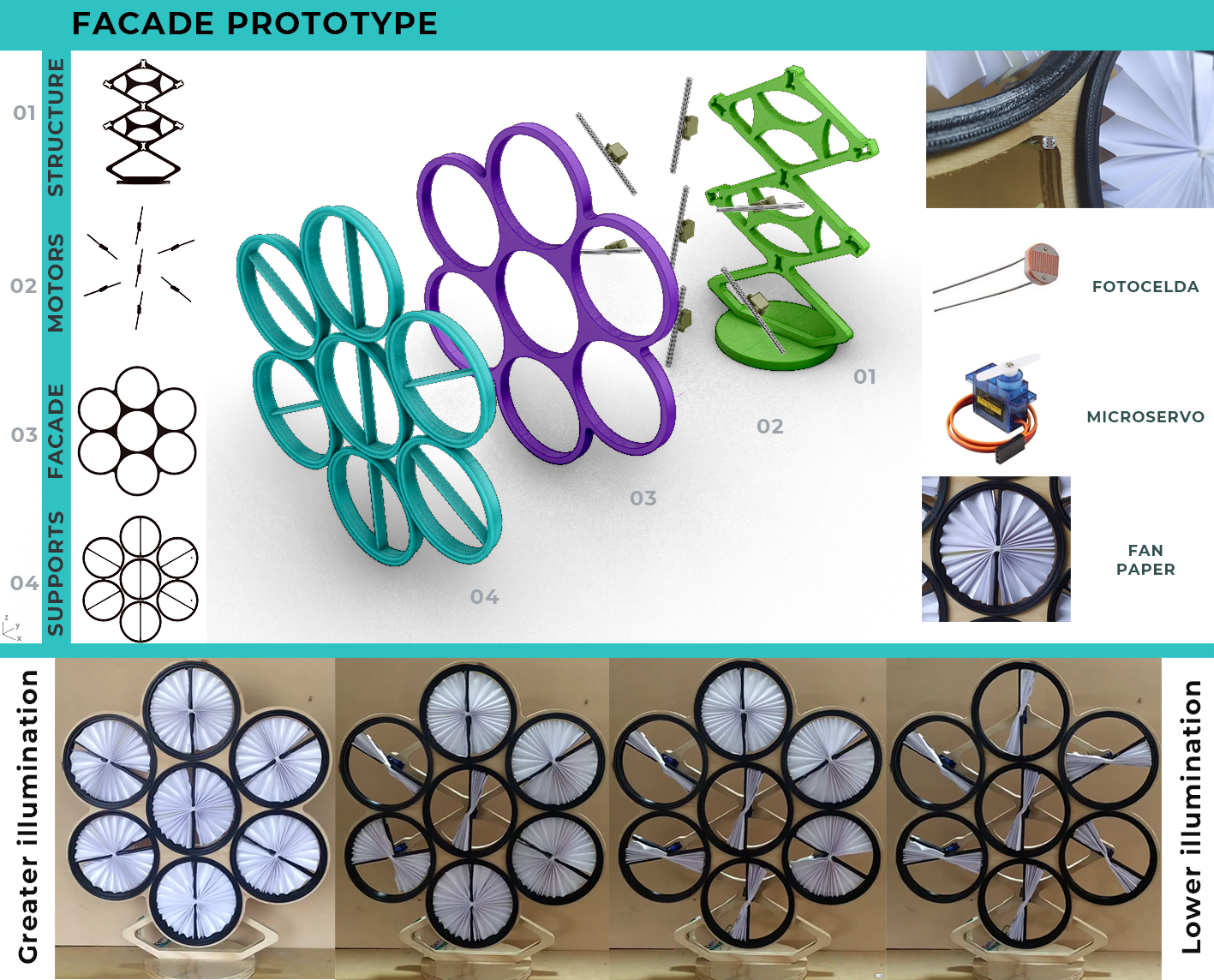FINAL PROJETS
Propose a final project
So after the first class we were given the task of thinking and proposing a final project. Considering some of the points.
To choose a final project, I wanted to select a topic related to my profession and career path, Architecture. A few years ago I worked as a bioclimatic consultant and building analysis in architectural projects. Since then I have been interested in the light and the comfort of the spaces.
Points to consider for the project
What will he do?
What are its implications?
Which has benefits?
How will i do it?
What do i like to do?
Outcome of the final project
The Sketch idea
The facades are one of the most important elements within a building, they regulate the entry of light, sun and wind, without forgetting the view of the landscape.
The idea is to build a facade prototype. This can be open and closed depending on how much light the space has, regulating the lighting conditions inside.

COMPONENTS
Sensors - LDR


An LDR is a resistor that varies its electrical resistance value depending on the amount of light incident on it. It is also called a photoresistor or photoresistor. The electrical resistance value of an LDR is low when light is shining on it (in some cases it can drop to as low as 50 Ohms) and very high when it is dark (it can be 1 MOhm or more).
LDRs are made of a photosensitive semiconductor crystal such as cadmium sulfide (CdS). These cells are sensitive to a wide range of light frequencies, from infrared through visible light to ultraviolet. Photoresistors made from cadmium sulfide are extremely sensitive to the range of light radiations that are visible in the human spectrum. Photoresistors made from lead sulfide are particularly sensitive to infrared radiation. Translated with www.DeepL.com/Translator (free version)
Micro Servo 9g SG90


The SG90 servo has a universal "S" type connector that fits most radio control receivers. This type of servo is ideal as its power requirements are quite low and it is allowed to be powered from the same power supply as the control circuit. For example, if it is connected to an arduino board, it can be powered during testing from the USB port of the PC without much trouble.
Features
Speed: 0.10 sec/60° @ 4.8V
Torque: 1.8 Kg-cm @ 4.8V
Operating Voltage: 3.0-7.2V
Operating temperature: -30 ℃ ~ 60 ℃
Rotation angle: 180°.
Pulse width: 500-2400 µs
Connector cable length: 24.5cm
DESING PROCES
The idea stems from the need to explore dynamic facades and the multiple options they allow in architecture, linking throughout the process everything related to digital and electronic manufacturing.
It starts from a sketch which is taking shape based on the final components to be used in the mechanism and looking for aesthetically as pleasant and clean as possible to enlarge the eye of the observer.
Translated with www.DeepL.com/Translator (free version)






The entire design was modeled in Rhinoceros 6 by measuring each component and then aligning it perfectly.

CNC PROCES
using wood, the entire main structure of the façade was fabricated by exporting the three-dimensional Rhino model to Fusion360 in order to generate the G-code used by the CNC router.







3D PRINT PROCES


ELECTRONIC PRINT PROCES













